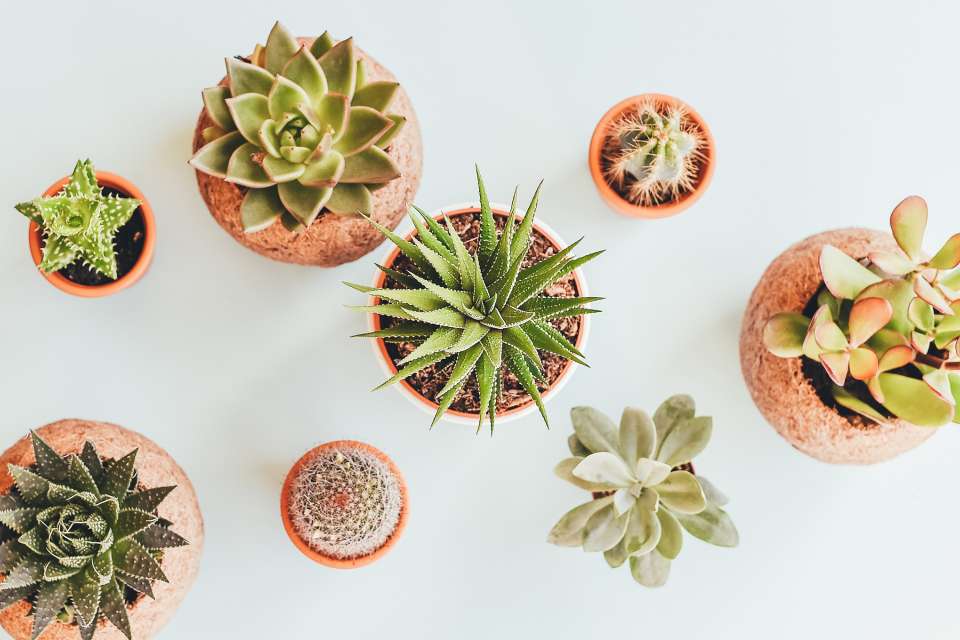Here’s How Indoor Plants Keep You Healthy — and How You Can Return the Favor

Move over, cats. Indoor plants have arrived, and they’re having a major millennial moment.
Five out of six people who picked up gardening in 2016 were between the ages of 18 and 34, and 31 percent of houseplant sales that year were made by millennials.
Nowadays, succulent-strewn Pinterest boards are the norm, and carefully cultivated urban jungles have become one of the trendiest ways to spruce up homes and brighten workspaces.
But it’s not all whimsical cacti arrangements and terrarium-encased air plants for looks alone. That potted ficus and all its flora friends are actually good for your health.
Nature’s flower power
Researchers have studied the relationship between nature and human well-being for decades, and it has gained renewed focus in recent years as more people remain sedentary and glued to their screens.
“There’s a growing body of work that focuses on the ways in which nature contact may benefit mental health,” explains Greg Bratman, Ph.D., an assistant professor in the School of Environmental and Forest Sciences at the University of Washington. “As this work progresses, experts are coming together from a variety of different disciplines, including epidemiology, public health and psychology.”
Researchers in this emerging field examine how humans respond to a variety of nature experiences, from ornamental plants in hospital rooms to the Japanese concept of “forest bathing.”
Numerous studies suggest that interacting with nature in some form can help reduce stress, lower blood pressure, encourage faster healing and increase overall happiness.
Even people who work in an urban office setting might benefit from glimmers of greenery. Spotting trees from a high-rise window or keeping potted plants at your desk can lead to increased job satisfaction and a higher level of commitment.
In essence, plant life can have some pretty profound effects on your health and well-being.

Combating sick building syndrome
While all this research highlights the importance of getting out to enjoy nature firsthand, that’s not quite as easy as it seems.
Americans spend about 90 percent of their time indoors, according to the Environmental Protection Agency. And when it’s cold or rainy out (read: often in Seattle), there’s even more incentive to skip out on a stroll and opt for a hygge afternoon at home instead.
That’s not just a bummer if you’re trying to #optoutside more often — it’s also bad news for your health.
Everything from your home’s carpeting, paint and drywall to your office’s copy machine releases contaminants into the air. Add a lack of ventilation, artificial lighting and everyday stresses, and you’ve got several factors for what experts call sick building syndrome.
The condition affects people who spend too much time inside, resulting in ailments like headaches, skin and sinus irritations, nausea and fatigue. So how can you banish the building blues?
Enter indoor plants.
Just like walking past trees and greenery outside, interacting with indoor plants may be able to reduce stress and anxiety. Plus, they have the added bonus of helping to purify the air.
NASA researchers conducted one of the most well-known studies on the matter in 1989. Looking for ways to curb air pollution in confined spaces, like on a space station, they found that ordinary daisies, chrysanthemums and other common house plants were able to remove as much as 90 percent of certain toxins from the air in just 24 hours.
Although it’s near impossible to replicate NASA’s pristine lab conditions in your home or office and get the same results, steps are being taken to make this more achievable in real life.
University of Washington researchers, for one, have genetically engineered a house plant that can clean the air of specific contaminants like chloroform and benzene.
“In most instances, there’s likely little downside to having indoor plants when it comes to psychological well-being,” Bratman says.

Indoor plant care tips
So now that you know how much that potted plant is doing for your health, here’s how you can do your leafy friends a solid and keep them healthy, too.
Choose the right plants
For an easy-care urban jungle that won’t cause you a lot of stress, it’s important to pick plants that can thrive in an indoor environment. Unless you keep a cool house, opt for plants that like warmer temperatures and don’t need excessive amounts of sunlight.
Laura Matter, a program manager at gardening nonprofit Tilth Alliance, says tropical shade plants like Chinese evergreens, peace lilies, philodendrons and dracaenas tend to do well indoors.
Allow for proper drainage
Just as selecting the right type of plant is important, picking the proper planter for your leafy friends is equally so.
“You want to make sure there’s a drainage hole,” Matter explains. “You can keep your plants in the plastic pot they’re sold in and then slide that directly into a more decorative planter.”
See the light
Set tropical shade plants 3 to 5 feet away from a southwest-facing window, where they can get bright but indirect sun. It’s also important to rotate plants on a regular basis to ensure they get sun exposure on all sides.
If you’re tending to cubicle-dwelling plants or ones that don’t get much opportunity to bask in the sun, Matter notes that full-spectrum light bulbs work just as well. Screw one into a desk lamp for year-round “sunshine” to feed your flora.
Water carefully
It’s important to know your plant’s specific watering needs — and to avoid the temptation to whip out the watering can more frequently than necessary.
“Be sure that you’re really checking that your plants need water,” Matter says. “People get into trouble with cacti and succulents, in particular, as they tend to get overwatered more than underwatered.”
Cultivate healthy soil
Just like water, fertilization needs vary from plant to plant. But indoor plants tend to deplete their soil nutrients faster because they’re kept confined in a planter.
Matter recommends using organic fertilizers that are specially formulated for house plants, as well as fertilizing once a month during the growing season, from March through August.
Keep it humid
Combat dry indoor conditions by misting plants once or twice a week to promote humidity.
Wiping down leaves with a damp cloth, ensuring proper air circulation and pruning dense areas can also help prevent dust build-up and keep pests at bay.
Ask the experts
If your jade plant is looking a little wilted despite your best efforts, don’t throw in the trowel just yet.
Green-thumb experts at the University of Washington Botanic Gardens’ Plant Answer Line and the Garden Hotline at Tilth Alliance offer free advice to home gardeners.
“The whole idea of caring for something can be really beneficial,” Matter says of why plants are so important. “There’s something about just being able to watch a living plant grow and the vibrancy of it. We respond to that whether we’re aware of it or not.”
Editor’s note: This article was originally published February 4, 2019. It has been updated with additional information on February 25, 2019.

 Healthy ideas for your inbox
Healthy ideas for your inbox





